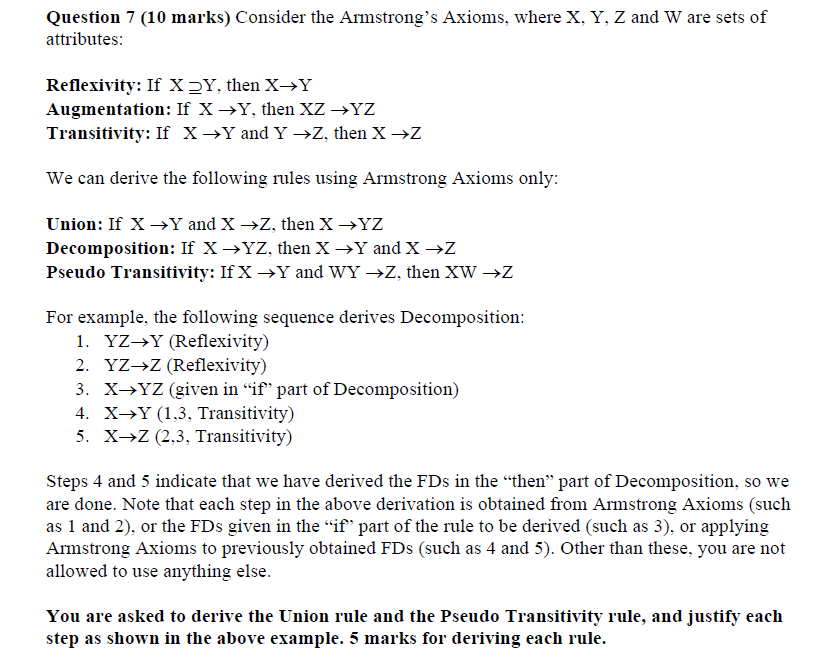Answered step by step
Verified Expert Solution
Question
1 Approved Answer
Consider the Armstrongs Axioms, where X, Y, Z and W are sets of attributes: Question 7 (10 marks) Consider the Armstrong's Axioms, where X, Y,
Consider the Armstrongs Axioms, where X, Y, Z and W are sets of attributes:
Step by Step Solution
There are 3 Steps involved in it
Step: 1

Get Instant Access to Expert-Tailored Solutions
See step-by-step solutions with expert insights and AI powered tools for academic success
Step: 2

Step: 3

Ace Your Homework with AI
Get the answers you need in no time with our AI-driven, step-by-step assistance
Get Started


